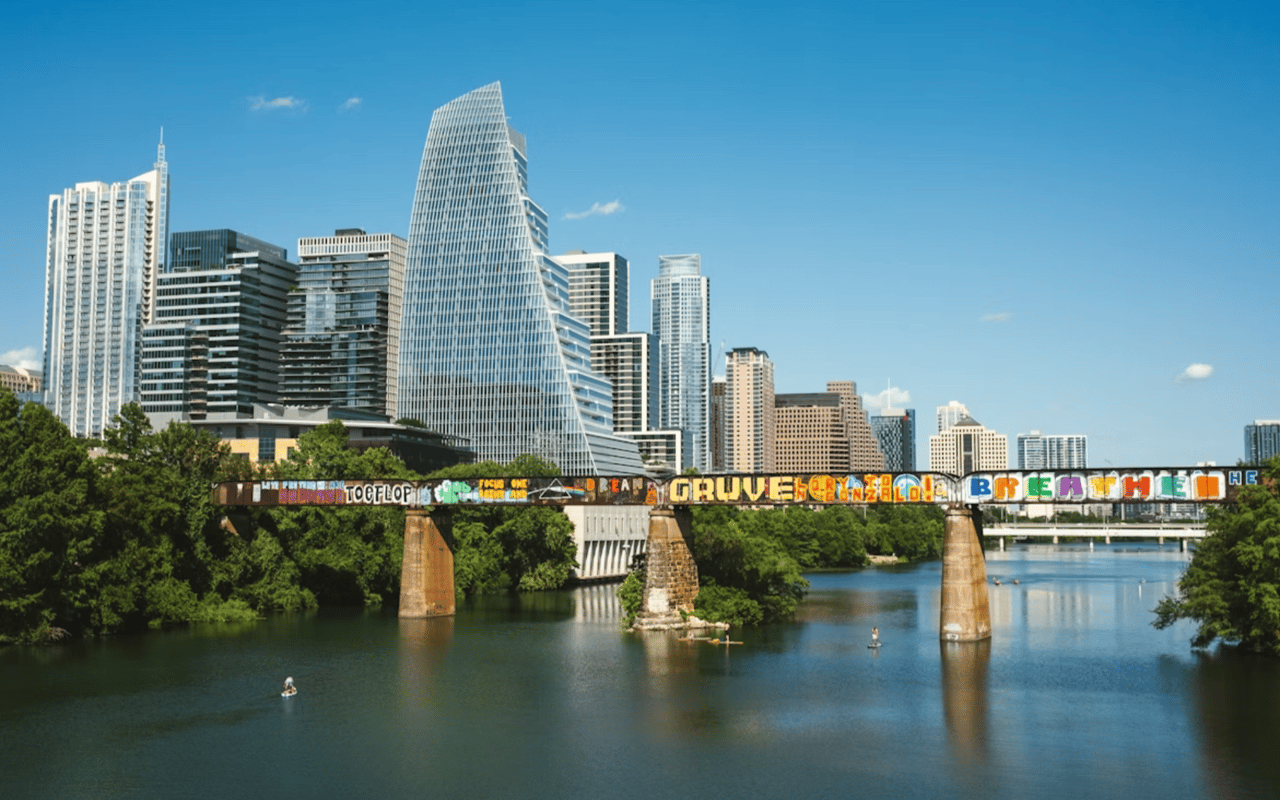Austin, Texas, is known globally for its vibrant music scene and burgeoning technology sector. The city's character is deeply rooted in its storied past, and its rich heritage is still visible, from its indigenous foundations to its role in the formation of the Republic of Texas.
This guide will take you through Austin's evolution, exploring the pivotal moments and landmarks that define its character.
The Indigenous Foundation and European Arrival
Long before it became the capital of Texas, the land now known as Austin was inhabited by indigenous peoples for thousands of years. The Tonkawa were the primary group in the area, a nomadic people who hunted bison and other game, following the seasonal migration patterns along the Colorado River. The Tonkawa deeply understood the land's resources, from its waterways to its native flora and fauna. Their presence is still reflected in local place names, serving as a reminder of their enduring connection to the region.
Spanish and later Anglo-American explorers began to move through this territory, gradually establishing trade relationships and outposts. The initial Anglo settlement was a small village called Waterloo, founded on the banks of the Colorado River in the 1830s. This community was a frontier outpost, a modest collection of cabins and structures that provided a foothold for future development. Its location was strategic, situated on a hill overlooking the river. This historical foundation of the settlement would become instrumental in the city's future growth.
Founding a Capital City
In 1839, the Republic of Texas sought a new, centrally located capital. Mirabeau B. Lamar, the Republic's second president, was impressed by the land around Waterloo and its potential for expansion. The site was selected and renamed Austin in honor of Stephen F. Austin, the "Father of Texas." The responsibility of designing the new city fell to Edwin Waller, the first mayor. His plan was an orderly grid that defined the downtown area.
Waller's design for Austin was methodical and forward-thinking. It featured a central Capitol Square on a prominent hill, with broad avenues extending from it. The north-south streets were named after Texas rivers, and the east-west streets were named for trees. This grid established a clear layout for the city's political and commercial center. The first land lots were auctioned under a grove of live oak trees, known as the Auction Oaks, a detail that marks a specific moment in the city's early development.
The Iconic Texas State Capitol
The current Texas State Capitol building is a monument to the state’s heritage, but it was not the first structure to hold that role. Austin's initial headquarters was a rustic frame building at 8th Street and Colorado Street. This was succeeded by a more substantial limestone building on the present grounds. That second capitol was destroyed by a fire in 1881, which prompted the construction of the building you see today.
The new capitol, designed by architect Elijah E. Myers and constructed between 1882 and 1888, was funded through an enormous land-for-building barter deal. The builders received three million acres of public land in the Texas Panhandle, which later became the famous XIT Ranch. The exterior's distinctive "Sunset Red" granite was donated from Granite Mountain near Marble Falls after initial plans for limestone were abandoned because the material stained easily. A special railroad spur was built to transport the heavy stone to the construction site.
Civil Rights and Social Change
Austin's history includes a long period of racial segregation that affected every aspect of civic life. The city's 1928 master plan, for example, formalized segregation by designating a "Negro District" in East Austin. This deliberate policy pushed African Americans and other minority groups into a concentrated area, away from city services and resources. Public facilities, schools, and even cemeteries were segregated by race.
Civil rights activism in Austin was a persistent and organized effort. Students and community leaders led sit-ins at lunch counters and organized protests to desegregate public places. One notable example of this fight was the desegregation of the University of Texas, which began with the landmark case of Heman Sweatt. The actions of these activists slowly dismantled the institutionalized segregation that had defined the city for decades, paving the way for a more integrated community.
The Birth of a Music Scene
The city's reputation as a live music destination did not happen by chance; it has a rich and complex history of Austin TX music. While German beer gardens and dance halls were popular in the late 1800s, the modern music scene began to take shape in the mid-20th century. The East Side became a hub for blues and jazz, with venues like Charlie's Playhouse hosting legendary artists. The late 1960s saw the rise of a psychedelic scene, which blended rock with counter-cultural attitudes.
The 1970s marked a pivotal moment with the opening of venues like the Vulcan Gas Company and the Armadillo World Headquarters. The Armadillo was instrumental in creating a new sound by bringing together country and rock audiences. This era also saw the arrival of Willie Nelson, who helped fuse the traditional country sound with the city’s more laid-back, progressive culture. The establishment of the long-running television show Austin City Limits also brought national attention to the city's musical identity.
The Rise of Silicon Hills
The latter half of the 20th century brought significant economic change to Austin. The city began to attract a different kind of industry, with technology companies establishing a presence. IBM was an early arrival, and in the 1980s, the founding of Dell Computer Corporation in a University of Texas dorm room became a famous local success story. This marked the beginning of Austin's transformation into a technology hub.
This shift continued through the 1990s and into the 21st century. Technology giants like Google, Apple, and Samsung established major operations in the city, leading to rapid population growth and an influx of skilled workers. This new era of development has created a thriving economy and altered the city's character. The tech boom is the most recent chapter in the evolving history of Austin TX.
Darsh Parikh
Consistently ranked among Austin’s top agents,
Darsh Parikh is a trusted expert in new construction and luxury real estate. Darsh combines deep knowledge of design, development, and strategic marketing to help clients maximize value — whether launching a project, selling a home, or securing the perfect property. With a proven record of guiding developers, sellers, and buyers through every stage, Darsh offers the insight, network, and results needed for real estate success in Austin.
Reach Darsh here as your next key step toward real estate success in Austin.










